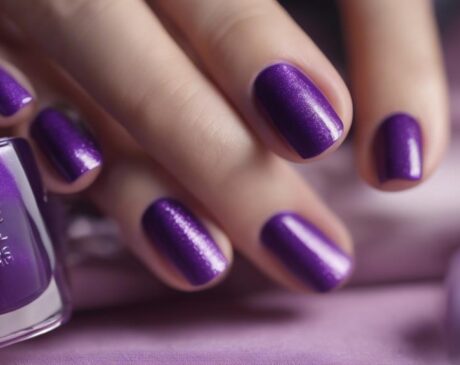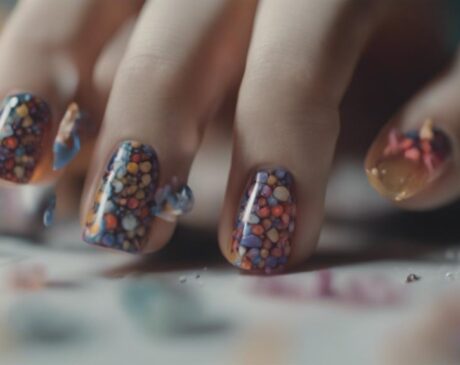Can you glue a split toe nail?

Cracked toenails are often considered a small but disturbing problem that can cause discomfort and worry for many people. This common condition not only affects the aesthetics of your nails, but it can also lead to discomfort and, in some cases, more serious nail health issues. The importance of proper nail care cannot be overemphasized. Healthy nails reflect more than just good grooming habits. They are also an indicator of our overall health. Proper nail care can help prevent a host of problems, including split nails, infections, and other complications.
Understanding Split Toenails
Causes of Split Toenails
Split toenails can be caused by a variety of factors, with environmental factors playing a major role. Excessive exposure to water, harsh chemicals, or extreme weather conditions can weaken the nails and make them prone to cracking. Similarly, nutritional deficiencies, especially deficiencies in vitamins such as biotin, vitamin C, and zinc, can adversely affect nail health, leading to brittle and cracked nails.
Symptoms and Recognition
Recognizing split nails is relatively simple. It usually manifests as a physical split in the nail that can range from a shallow crack to a deep split up to the nail bed. Recognizing when a cracked nail needs professional care is critical. If the split is accompanied by severe pain, bleeding, signs of infection, or if basic care doesn’t improve, it’s time to consult a healthcare professional.
The Role of Nail Glue in Repairing Cracked Nails
What is Nail Glue?
Nail glue is a specialized adhesive used in nail care designed to repair damaged nails, including split nails. Its ingredients usually include cyanoacrylate, a strong and fast-drying adhesive. Nail glue is not just used for cosmetic purposes; it also helps to temporarily hold cracked nails together, preventing further damage and aiding in the healing process.
How Nail Glue Helps
Nail glue can be a fast and effective temporary fix for split nails. By bonding the split portion, it provides stability to the nail, allowing it to grow out without splitting further. However, it is vital to understand the limitations and precautions associated with its use. Nail glue should not be used as a long-term solution, nor should it be used to treat deep, painful splits that may require medical attention. Additionally, one must be wary of allergic reactions and always follow the instructions that come with the product.
Step-by-Step Guide to Gluing Split Toenails
Preparing the Nails
Before applying nail glue, it’s vital to prepare your nails correctly to ensure you get the best results. Begin by thoroughly cleaning your toes to remove any dirt or debris. Use mild soap and water and then dry your toes completely. It is vital that the surface is dry as moisture can affect the effectiveness of the adhesive. Gently file away any rough edges around the crack to prevent further damage and create a smooth surface for the adhesive.
Applying the Glue
Once you have prepared your nails, it’s time to move on to applying the glue. Please follow the steps detailed below:
- Apply a small amount of nail glue directly to the cracked area. Use a toothpick or small brush for more precise application.
- Carefully place the split edges together and hold them in place for a few seconds to allow the glue to bond.
- Once the glue has dried, apply clear nail polish to strengthen the nail and provide extra protection.
- Avoid applying pressure to the toe for a few hours to allow the glue to set properly.
Aftercare and Protection
After successfully gluing split nails, it’s important to keep them in good condition:
- Keep your toes dry and clean.
- Apply moisturizer regularly to keep skin and nails moist.
- Wear comfortable, well-fitting shoes to avoid pressure on the toes.
- Monitor your nails for any signs of infection or worsening of the condition.
Alternative Therapies and Prevention
Home Remedies
For those seeking natural remedies, some home remedies can help strengthen nails and prevent cracking:
- Soaking nails in a mixture of warm water and olive oil can improve moisture.
- Applying vitamin E oil directly to the nails can promote healing and strength.
- Regular consumption of biotin-rich foods or supplements can enhance nail health.
Preventive Measures
Lifestyle and dietary changes can play an important role in preventing cracked toenails:
- Maintain a balanced diet rich in vitamins and minerals.
- Stay hydrated to keep nails moist.
- Wear proper footwear, especially during physical activity.
When to See a Professional
It’s important to know when home remedies and self-care aren’t enough. Seek professional help if you notice any of the following:
- Signs of infection, such as redness, swelling, or pus.
- Severe pain or discomfort.
- No improvement or worsening of the condition despite home care.
For long-term care, a podiatrist or dermatologist can provide tailored advice and treatment options to ensure the health and well-being of your toenails.
Do’s and Don’ts of Dealing with Split Toenails
When dealing with split toenails, it’s important to follow best practices and avoid common mistakes:
To Do:
- Keep the nail clean and dry: this prevents infection and aids the healing process.
- Trim nails carefully: use a proper nail clipper to prevent further splitting.
- Use protective footwear: this helps to avoid additional damage to the toes.
- Consult a professional if necessary: especially if there is pain, infection, or no improvement.
What Not to Do:
- Don’t ignore cracks: untreated cracks can worsen and lead to complications.
- Don’t use regular glue: use only nail glue, as other adhesives may be harmful to the nail.
- Don’t pick at your nails: this can exacerbate cracks and introduce bacteria.
- Don’t cover them with fake nails: this can build up moisture and inhibit healing.
While cracked toenails can be troublesome, they are usually manageable with proper care. Understanding the causes and symptoms is the key to prevention and early treatment. Nail glue can be a temporary solution, but it’s vital to use it properly and be aware of its limitations. Remember that not all cracks can be treated at home. It is vital to seek professional advice when necessary. Taking proactive steps in nail care and lifestyle choices can significantly reduce the risk of future splitting.
Frequently Asked Questions
- Can any type of glue be used to split toenails?
- No. It is important to use only specialized nail glues. Household glues can be toxic and can further damage nails.
- How long does a glued nail last?
- The duration depends on the severity of the split and the growth of the individual nail, but it usually lasts a few days to a week.
- Are there any risks associated with using nail glue?
- Yes, there may be risks such as allergic reactions or further damage to the nail if not used properly. Always follow the product’s instructions.
- Are split toenails indicative of other health problems?
- Sometimes, chronic or severe splitting can be a sign of nutritional deficiencies or underlying health conditions. Consultation with a healthcare provider is recommended.
- What is the best way to prevent split toenails?
- Maintaining a balanced diet, trimming and moisturizing your nails, and protecting your toes from trauma can help prevent split toenails.




